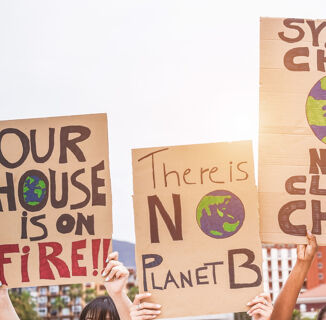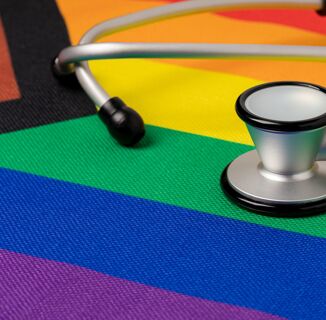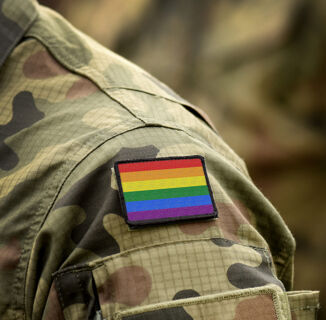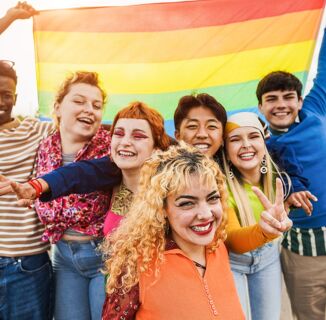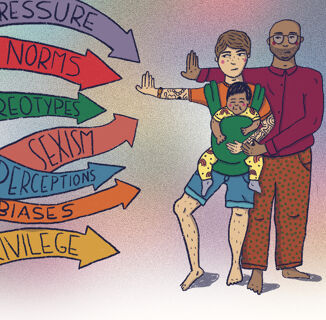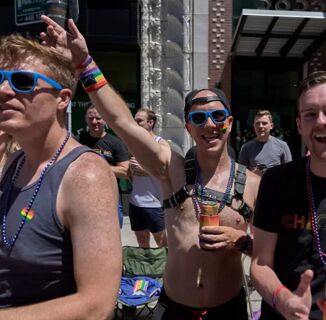Lesbian, gay, bisexual, or questioning youth are two times more likely than straight teens to use illegal drugs such as cocaine, heroin, and meth, according to a recent study in the American Journal of Public Health.
The authors write: “Considering how both drug use trends and sentiment surrounding sexual minorities has changed in recent years, contemporary data providing a holistic perspective of LGBQ substance use risk…are needed to guide comprehensive public health and policy strategies.”
The research builds on previous studies that found stressors like being closeted or being rejected by family and friends could lead to increased substance abuse in LGBQ teens.
According to the Human Rights Campaign, LGBTQ youth are twice as likely to be bullied, excluded, and even assaulted at school. That along with being 40 percent less likely to have a family member they can turn to can push these teens to try drugs and alcohol.
In an email to Reuters Health, one of the study’s co-authors, John Ayers, said that these issues “may make drugs foolishly appear attractive as a coping mechanism.”
The recently published study sampled over 14k high school students who were surveyed in 2015. The study asked these students about their lifetime and recent use (less than one month) of 15 substances that included both illegal drugs but also substances such as alcohol, tobacco, and even medication that did not come from a prescription.
Eleven percent of the teens surveyed identified as somewhere along lesbian, gay, bisexual, or questioning. Two percent identified themselves as lesbian or gay, six percent as bisexual, and three percent said they were questioning.
Students who identified as LGBQ were over three times more likely to use heroin or meth at least once, according to the study. They were twice as likely when it came to trying ecstasy or cocaine.
“Even experimentation with these harder drugs can derail a teen’s future,” Ayers warned.
There was also a 12 percent higher chance that LGBQ youth would report substance abuse in their lifetimes compared to heterosexual youth. Within the past month, the number was 27 percent higher.
The researchers reported that over six percent of queer teens used heroin sometime in their lives. In comparison, only about one percent of straight youth had.
Almost nine percent of queer teens had used methamphetamines, while 2 percent of straight teens reported using them.
About half of LGBQ teens used marijuana compared to 38 percent of non-LGBQ teens.
In something that is not such a surprise, alcohol and tobacco were more often used. However, these numbers are still higher in queer youth than non-queer youth.
Seventy-two percent of queer teens reported drinking alcohol compared to 63 percent of other teens. Forty-seven percent of queer teens reported they had smoked at least one time, while that number was 31 in other teens.
Overall, the study found that 51 percent of LGBQ teens reported taking one of the listed substances (illegal and otherwise) in the past 30 days, and 80 percent reported taking one in their lifetime. This is compared to 42 and 71 percent of non-LGBQ teens respectively.
The researchers note that overall most teens, LGBQ or not, did not use illegal drugs. They also write that the study is the first to their knowledge to show an increased risk of substance use besides drinking alcohol and smoking cigarettes.
Kimberly O’Brien, who was not involved in the study, researches LGBTQ youth drop-in centers, exploring substance use and risk and protective factors among them. She is a researcher at Boston Children’s Hospital and Education Development Center and a psychiatry instructor at Harvard Medical School and she told Reuters in an email that the study from Ayers and his colleagues could bolster claims made by smaller studies that had found that LGBQ youth are at a greater risk for substance use.
“The fact that the proportion of youth who identify as LGBQ is increasing (makes) it even more important for families and professionals to pay attention to this relationship because of the increasing numbers of youth affected,” she said, according to the outlet.
What about trans-identifying teens? The researchers in the study concentrated on sexual orientation. Because of that, data on trans youth is absent, which they write is one of the limitations of their study.
As the Human Rights Campaign notes in its brief on LGBTQ youth substance abuse, “We know less about substance use and abuse among teens who are transgender…we do know that transgender young people experience certain substance abuse risk factors, such as peer victimization and psychological distress, even more often than lesbian, gay, bisexual or queer youth who are cisgender (non-transgender). This fact suggests that we should be particularly concerned about substance abuse among transgender youth.”
Authors of the study concluded that LGBQ teens are a “substantially greater risk for substance use” and that lawmakers should put more effort and resources behind early intervention and prevention to address the issue.
Image via Getty
Help make sure LGBTQ+ stories are being told...
We can't rely on mainstream media to tell our stories. That's why we don't lock our articles behind a paywall. Will you support our mission with a contribution today?
Cancel anytime · Proudly LGBTQ+ owned and operated
Read More in Impact
The Latest on INTO
Subscribe to get a twice-weekly dose of queer news, updates, and insights from the INTO team.
in Your Inbox


